#An Accident in Manisa
Text

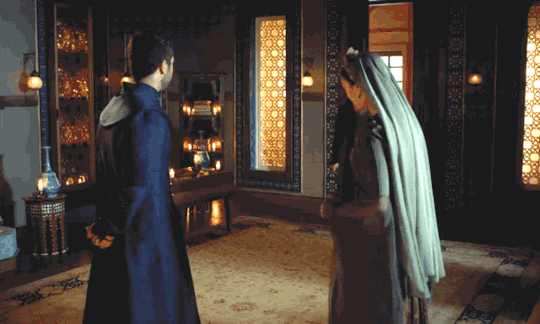








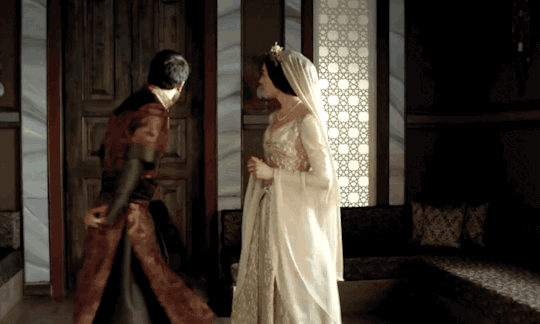
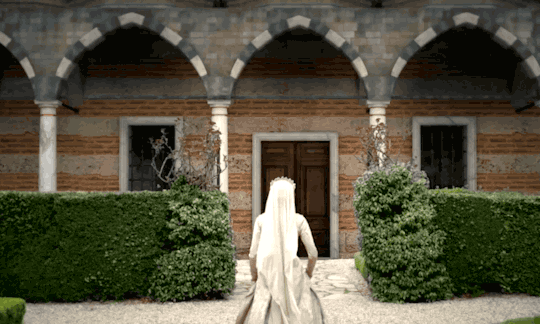
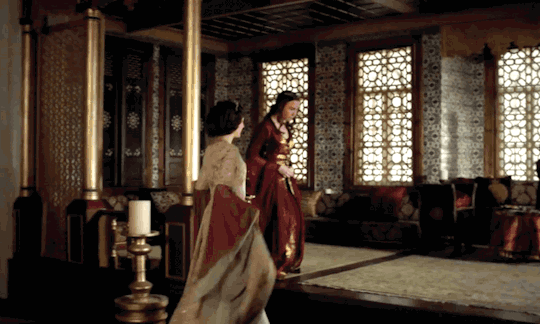
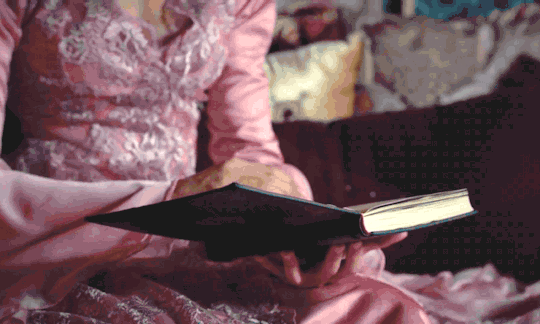
Magnificent Century + Faceless Sultanas: Huricihan Sultan
#Muhteşem Yüzyıl#Magnificent Century#mcedit#Muhtesem Yuzyil#Huricihan Sultan#weloveperioddrama#perioddramaedit#period drama#historical drama#Another Sister of the Sultan#MCPlus#MC 4x08#MC + Faceless Sultanas#Brotherhood War#The Dangerous Game#An Accident in Manisa#Rebellion or Seeking Justice#All the Secrets Become Clear#Everything Goes According to Plan#The Day of Reckoning Has Come#The First Victim of the Struggle#Awkward-Sultana#Disobedience
25 notes
·
View notes
Photo









Costumes
From: Magnificent Century, ep. 106, 110, 113, & 114
Character: Fatma Sultan
Actor: Meltem Cumbul
Costume By: Serdar Başbuğ
(requested by anonymous)
#magnificent century#muhtesem yuzyil#mcedit#perioddramaedit#fatma sultan#meltem cumbul#S4E114 An Accident in Manisa#S4E113 The Dangerous Game#S4E106 Another Sister of the Sultan#S4E110 The Execution of the Head of the Janissaries#mcs4#costume sets#costume edits#requests#my edits
260 notes
·
View notes
Text
Death and funerals/Halál és temetés
Death was also a very important part of the life of Ottoman Empire, especially because violent death was extremely common among male members of the dynasty. We are all familiar with the law of fratricide, which has led to the death of hundreds of princes (in many cases infants, children) by being strangled with a silk string. In my post today, however, I would rather talk about those for whom the cause and time of death are not so clear. I brought you some interesting, possibly suspicious deaths, and tried to gather everything about the causes of death of each sultan, prince, and sultana; and I also brought a brief history of the funerals: who was buried where, when there were unusual changes in funeral habits…

In general, very little is known about the deaths of the sultans of the early period. In many cases, we are left with guesses about the cause of death. However, the death of Murad I. (r. 1362-1389) is, for example, a refreshing exception, as several descriptions of his death have been made. He was killed by a Serbian nobleman during or before the Battle of Rigómező (1389). “… Absolutely unexpectedly, Milos Obilic who, out of cunning and intrigue, said he had adopted Islam, asked us to (…) kiss the shining lord’s foot, but instead of doing so, he inevitably stabbed a poisoned knife hidden in his dress into the glorious body of the lord, and seriously wounded him, and drank him with the serbet of the martyrs.” Of course, it is not certain that everything happened as described, but it is certain that he was victim of murder by the hands of Milos Obilic.
The death of Bayezid I (r. 1389-1402) himself is also interesting. Some believe that he committed suicide in the captivity of Timur Lenk (r. 1370-1405) after Timur humiliated his wife, Maria before his eyes. Others say he was poisoned during captivity.
Either way, the deaths of the sultans always marked the beginning of something new. If the sultan died, there was no time to mourn. For their wives, concorts, and chief pashas had a different matter after death: to immediately notify the crown prince, or the prince whom they themselves wanted to see on the throne. The sultan became the one who reach the capital first and ascended the throne. In the early days, sultans often died during a campaign away from their home - the imperial capital - so it was their pashas who informed the princes about the situation. The princes did everything they could to get to the capital first. In many cases, they also received help from the pashas who supported them. For example, Bayezid II (r. 1481-1512), who had previously married his daughters to influential pashas. His sons-in-laws did everything they could to slow down Bayezid’s biggest rival, one of his brothers, on the road to Istanbul. They succeeded and Bayezid ascended the throne, so the pashas received their reward for it.
Unlike Bayezid II, at the death of Sultan Süleyman I (r. 1520-1566), there was no longer a competitor to his son, Selim II (r. 1566-1574). Yet Süleyman still died at a very bad moment - right in the middle of a battle - caused by the health problems by his gout. To avoid rebellion and loss of soldier's motivation, the grand vezir, Sokollu Mehmed Pasha concealed the sultan's death. He clothed servants in the sultan's robes, he dictated commands written by similarly handwritten scribes on behalf of the sultan until Selim II finally arrived to the camp and became a sultan.
In later periods, after his death the sultan's consorts played the main role, not his pashas, as the sultans died more and more often in the capital. One particularly interesting example of this is Selim II's death, which he suffered after slipping in the bath and which his wife, Nurbanu Sutan (⁓1525-1583), shared only with the Grand Vizier, and secretly sent a message to Nurbanu's son Murad (r. 1574-1595) to come to the capital. This was necessary because Murad's younger brothers were in the capital at the time of Selim's death.
The sultans were always buried in the current imperial capital. Bursa, as a former capital, played an important role even after the conquest of Constantinapole, as the princes who had been executed or died by natural causes were buried there. Of course, there were exceptions, during the reign of Süleyman I (r. 1520-1566) there was two. His favorite son, Mehmed (1521-1543), died of illness in Manisa, but breaking with customs, Süleyman not only buried him in the capital instead of Bursa, but had made a mosque to him, which vied with the mosques of the sultans. His other son, the rebellious Bayezid (1525-1562) was less fortunate. Because he was executed near the Iranian border, Süleyman even refused him the Bursa funeral so he was buried with his sons near to the Iranian border. His youngest son, who was an infant and could not flee to Iran with his him, was buried in Bursa among other princes of similar destiny.
Before we scrutinize the sultanas, here is a brief summary of the period of the “Sultanate of women” and the period immediately preceding it, about the causes of death of the sultans and princes, without claiming completeness*:
Bayezid II (b. 1447): 24 April 1512, most probably poisoning or natural causes
Selim I (d. 1470): 22 September 1520, most probably tumor or anthrax but plague is also an option
Süleyman I (b. 1494): 7 September 1566, gout but some sources suggest stroke also beside the gout
Şehzade Mahmud (b. 1512): 29 October 1521, smallpox or plague
Şehzade Musztafa (b. 1515): 6 october 1553, strangled
Şehzade Mehmed (b. 1546): 10 october1553, strangled
Şehzade Ahmed (b. ?): 1552, illness
Şehzade Murad (b. 1519): 12 October 1521, smallpox or plague
Şehzade Mehmed (b. 1521): 6 November 1543, smallpox or plague
Şehzade Abdullah (b. ⁓1525): c. 1527, maybe smallpox or plague
Şehzade Bayezid (b. ⁓1525 ): 23 July 1562, strangled
Şehzade Orhan (b. ⁓1543): 23 July 1562, strangled
Şehzade Osman (b. ⁓1545): 23 July 1562, strangled
Şehzade Abdullah (b. ⁓1548): 23 July 1562, strangled
Şehzade Mehmed (b. ⁓1544): 23 July 1562, strangled
Şehzade Murad (b. ⁓1556): 23 July 1562, strangled
Şehzade ? (b. ⁓1560/1): July 1562, strangled
Şehzade Cihangir (b. 1531): 27 November 1553, chronical illness and some kind of acut desease
Selim II: 12/15 December 1574, head injury after slipping
Şehzade Mehmed (b. ⁓1570): 1573/74, illness
Şehzade Szulejmán (b. ⁓1570): 22 December 1574, strangled
Şehzade Abdullah (b. ⁓1570): 22 December 1574, strangled
Şehzade Ali (b. ⁓1572): 1572, soon after his death
Şehzade Oszmán (b. ⁓1573/4): 22 December 1574, strangled
Şehzade Cihangir (b. ⁓1573/4): 22 December 1574, strangled
Murad III (b. 1546): 16 January 1595, natural causes
Şehzade Selim (b. 1567): 1595. január 28, megfojtás
Şehzade Mahmud (b. 1568): c. 1581, illness
Şehzade Süleyman, Cihangir, Ahmed died after their birth
Şehzade Abdullah (b. 1585): 28 January 1595, strangled
Şehzade Mustafa (b. 1585): 28 January 1595, strangled
Şehzade Bayezid (b. 1586): 28 January 1595, strangled
Şehzade Cihangir (b. 1587): 28 January 1595, strangled
Şehzade Abdurrahman (b. ?): 28 January 1595, strangled
Şehzade Alemşah (b. ?): 28 January 1595, strangled
Şehzade Aleaddin Davud (b. ?): 28 January 1595, strangled
Şehzade Ali (b. ?): 28 January 1595, strangled
Şehzade Hasan (b. ?): 28 January 1595, strangled
Şehzade Hüseyin (b. ?): 28 January 1595, strangled
Şehzade Ishak (b. ?): 28 January 1595, strangled
Şehzade Murad (b. ?): 28 January 1595, strangled
Şehzade Oszmán (b. ?): 28 January 1595, strangled
Şehzade Ömer (b. ?): 28 January 1595, strangled
Şehzade Yusuf (b. ?): 28 January 1595, strangled
Mehmed III (b. 1566): 21 December 1603, natural causes but some suggest he died because of health problems caused by his overweight
Şehzade Selim (b. 1585): 1597, illness
Şehzade Mahmud (b. 1587): summer of 1603, strangled
Şehzade Süleyman (b. ?): 1597, illness
Şehzade Cihangir (b. ?): 1602, illness
Ahmed I (b. 1590): 22 November 1617, typhus or gastric bleeding
Şehzade Mehmed (b. 1605): 12 January 1621, strangled
Şehzade Bayezid (b. 1612): 27 July 1635, strangled
Şehzade Kasim (b. 1614): 17 February 1638, strangled
Şehzade Süleyman (b. 1615): 27 July 1635, strangled
Şehzade Hasan, Orhan, Selim, Hüseyin, Cihangir and possibly others also died an infants or young children
Mustafa I (b. ⁓1600): 1639, natural causes most probably, but epilepsy os also an option
Osman II (b. 1604): murder
Şehzade Ömer (b. 1621): 1622, there are more than one options: accident, shock, murder, illness
Murad IV (b. 1612): 8 February 1640, cirrhosis and other chronical illnesses
He had lot of sons, but all of them died as infants. Evliya Celebi suggest that all of them were born with a bad health and they died soon. This suggests an extreme situation, poisoning or genetical desease are also options.
Ibrahim I (b. 1615): 18 August 1648, strangled
Şehzade Murad, Osman, Bayezid, Cihangir died as infants caused by illness
Şehzade Selim (b. 1644): 1669, most probably by illness
Mehmed IV (b. 1642): / November 1693, natural causes
Süleyman II (b. 1642): 22 June, 1691, his body got swollen then he fall into coma and later died.
Ahmed II (b. 1643): 6 February 1695, natural causes or stress-caused stroke/heart-attack
It is especially rare when the exact cause and date are both available for the sultanas. We know their lives primarily from registers that list their possessions and salaries. Thus, in many cases, we can only conclude that when they disappeared from the registers, they may have died. However, these registers are often incomplete, sometimes missing for several years, decades, and they can even be fragmentary. In addition, the cause of death was recorded even less frequently. To this we can usually deduce from if there was a child born, or there was a fresh marriage immediately before the time of death, or possibly was there a huge epidemic at the time of death? About the influential sultanas, the historians and ambassadors have occasionally recorded the supposed cause of death. However, this is quite rare, as will become clear from reading the list at the bottom of the chapter.
The burial of sultans has always evoked double feelings in the people, because on the day of the funeral, the ascension of the new sultan was celebrated and meanwhile the new sultan's brothers were executed by the new sultan so the people moruned them. In contrast, the mourning and funeral customs of the sultanas were much calmer, receiving more attention in this sense. At the time of their death, the needy were often given alms and food for the sake of the sultana's soul. For example, the burial of Handan Valide Sultan (⁓1570-1605) after her death on November 9, 1605, the Venetian ambassador recorded the vast amount of alms distributed among the people. In addition, the death and burial of a valide sultan was always associated with a public mourning, as the people could express their sympathy for the sultan, who had lost his mother at that time. After the death of Ayşe Hafsa (⁓1475-1534), the mother of Süleyman I, for example, the city mourned for several days. Süleyman’s mother Hafsa Sultan had been an honored member of the royal family. In describing her funeral, the royal chancellor and historian Celalzade Mustafa honored her with a long series of formulas of praise, among which are the most exalted that can be applied to a Muslim woman, likening her to the Prophet Muhammad’s first wife Khadija, his daughter Fatima, and his third and favorite wife ‘A’isha: “[S]he was a woman of great ascetism and a lady of righteous thought, queen of the realm of chastity and the Khadija of the capital of purity, builder of charitable foundations and doer of pious deeds, the Fatima of the era and the ‘A’isha of the age.”
In the case of sultanas, instead of violent death, childbirth was the leading death-cause. Many died in labour and childbirth... Although the palace’s doctors and midwives were the bests in the world, childbirth was a dangerous activity in those days. The fact is, however, that far fewer women from the dynasty of the Ottoman Empire died of childbirth compared to the western empires. The most famous birth-related death belongs to Esmehan Kaya. Kaya Sultan (1633-1658) was the daughter of Murad IV (r. 1623-1640), and she inherited the nature of her father, this is why she was considered by many to be Murad’s most worthy child. Legend has it that Esmehan Kaya was predicted that she would die in childbirth, which is why she did not allowed her husband close to her for years. However, over time true love developed between her and her husband, which of course was fulfilled physically. Esmehan Kaya gave birth to two children, so perhaps he had already forgotten the prophecy and breathed a sigh of relief. However, there were complications at the birth of her third child. The placenta did not detached, even though the midwives tried various tortures, so a few days after giving birth, she died by sepsis after horrible sufferings. Her little daughter didn't live too long either. One of Kaya’s sisters, Safiye (⁓1540-1580), also died during childbirth.
However, not Kaya and her sister were the only ones who died during childbirth, Two daughters of Selim II (r. 1566-1574) died in a similar way: Fatma Sultan (1558-1580), who died along her daughter after giving birth, at a fairly young age; and Esmehan Sultan (⁓1545-1585) who died of complications after the birth of his fourth child. Her son survived her just with a month. In her case, the complications may also have been related to the fact that she gave birth in a relatively old age compared to the customs of the period, at about forty years of age. It is interesting, by the way, that Selim's other daughter, Şah (1544-1580), also died at a relatively young age due to illness, so of Selim's daughters, only Gevherhan (⁓1545-1622?) was the one who died in old age and presumably by natural causes.
According to legends, Murad III's (r. 1574-1595) favourite consort, Safiye Sultan(⁓1550-1620?), also almost died in one of her miscarriages, but as we know she eventually survived and was able to rule for many, many more years. The less fortunate Mahfiruze Hatun (⁓1590-1608 / 12?), concubine of Ahmed I, and the mother of his eldest son, presumably also died in childbirth, although in her case several alternatives arose as to the cause of death, including epidemic also.
Interestingly, among the sultan’s favorites, we know even fewer cases where a concubine died during childbirth. However, the reason for this is presumably not that this has not happened ever… The reason is that when the concubine died in childbirth she was simply forgotten. After all, the average concubine did not give birth to a large number of children, especially as long as the one-concubine-one-son rule was followed. Thus, in all likelihood, when they died during childbirth, they either had no other children or only daughters, so they were less important persons, their names were recorded less, and then they disappeared from the public consciousness.
From the period of the “Sultanate of women” I also collected the causes and dates of the death of the most famous sultanas, without claiming completeness, as many sultanas were left out of the list because neither the year nor the reason of their death is known and in many cases not even their names *:
Ayşe Hafsa Sultan (b. ⁓1475): 19 March 1534, illness, most probably stroke or cancer since she suffered for months
Beyhan Sultan (b. ⁓1492): c. 1559, most probably natural causes
Hatice Sultan (b. ⁓1491): ?
Fatma Sultan (b. ⁓1493): 1557, most probably natural causes or illness
daughters of Selim I
Hafsa Sultan (b. ⁓1495/1500): 10 July 1538, most probably illness
Şah-i Huban Sultan (sz. ⁓1500): 1572, natural causes
Hürrem Sultan (b. ⁓1503): 15 April 1558, most probably cancer and maybe malaria also
Mihrimah Sultan (b. 1522): 25 January 1578, most probably natural causes or illness
Ayşe Hümaşah Sultan (b. 1541): 1594, natural causes or illness
Şehzade Mehmed’s daughter
Hümaşah Sultan (b. 1543): 1582, natural causes or illness
Fatma Hanimsultan (b. 1567): 29 July 1588, illness or complications during childbirth
Raziye Sultan (b. ⁓1515): October 1521, smallpox or plague
Mahidevran Hatun (b. ⁓1500): 3 February 1581, natural causes
Mahidevran Hatun’s granddaughters:
Fatma Sultan (b. ⁓1545): 1577, illness or childbirth
Nergiz-Şah Sultan (b. ⁓1536): c. 1592, natural causes or illness
Gülfem Hatun (b. ⁓1495): 1562, natiral causes or execution
Nurbanu Sultan (b. ⁓1525): 7 December 1583, most probably a sudden illness, or stroke/heart-attack, but poisoning is also an options
Esmehan Sultan (b. ⁓1545): 8 August 1585, complications after childbirth
Şah Sultan (b. 1544): September 1580, illness
Gevherhan Sultan (b. ⁓1545): after 1604, maybe in 1622, natural causes
Selim II’s daughter, Fatma Sultan (b. 1558): September 1580, after childbirth (maybe complications after a still-birth)
Safiye Sultan (b. ⁓1550): c. 1520, natural causes
Ayşe Sultan (b. ⁓1565): 15 May 1605, most probably illness
Hümaşah Sultan (b. ⁓1565): after 1580, illness or childbirth
Fatma Sultan (b. ⁓1565): c. 1620, natural causes
Murad III’s daughters:
Fahriye Sultan (b. ⁓1588): after 1641, natural causes
Rukiye Sultan (b. ⁓1593): c. 1623, most probably illness or childbirth
Handan Sultan (b. ⁓1570): 9 November 1605, gastric problems
Halime Sultan (b. ⁓1570): after 1623, ?
Kösem Sultan (b. ⁓1590): 2 September 1651, strangled
Hanzade Sultan (b. ⁓1609): 23 September 1650, illness or natural causes
Ayşe Sultan (b. ⁓1605/7): c. 1657, most probably natural causes
Fatma Sultan (b. ⁓1606): c. 1670, most probably natural causes
I. Ahmed’s daughters
Gevherhan Sultan (b. ⁓1605): 1660, natural causes
Abide Sultan (b. 1618): c. 1648, most probably illness (or she lived longer just retired and became forgotten)
Atike Sultan (b. ⁓1614): c. 1670, most probably natural causes
Ayşe Sultan (b. ⁓1610): c. 1680, natural causes
Esmehan Kaya Sultan (b. 1633): 1658, complications after giving birth
IV. Murad’s daughters:
Safiye Sultan (b. 1635):1680, complications after giving birth
Rukiye Sultan (b. ⁓1640): 1696, most probably natural causes
Hanzade Sultan (b. 1631): 1675, most probably natural causes
Turhan Hatice Sultan (b. ⁓1627): 1683, natural causes by some chronical illness.
Fatma Sultan (b. 1642): 1657, illness
Ibrahim I’s daughters:
Gevherhan Sultan (b. 1642): 21 September 1694, long illness
Beyhan Sultan (b. 1645): 5 March 1701, natural causes
Hatice Muazzez Sultan (b. ⁓1627): 12 September 1687, heart attack or stroke
Saliha Dilaşub Sultan (b. ⁓1627): 4 December 1689, long illness maybe cancer
Telli Hümaşah Sultan (b. ⁓1630): c. 1672, most probably illness
Emetullah Rabia Gülnüs Sultan (b. ⁓1642): 6 November 1715, illness
A short discussion about the history and customs of funerals
For a long time, the sultans were the only "inhabitants" of their tomb. In this Murad III made a change, burying his executed siblings next to his father, Selim II. But over time, Murad broke another tradition when he buried his mother, Nurbanu, next to his father in his tomb. For in the past centuries the wifes and consorts of the sultans had not been placed in a tomb with their master, and for a long time not even in their mosque. An early exception to this was Süleyman I's mother Ayşe Hafsa, who was buried in Süleyman I's father's mosque. Over time, Süleyman buried his only wife, Hürrem, in his own mosque in a separate tomb. And later Nurbanu was the first woman to rest right next to her husband in the same tomb. Importantly, however, Murad had already done a similar thing before Nurbanu. When Mihrimah Sultan passed away, knowing how close she was to his father, Murad buried her in Süleyman’s tomb, right next to her father. This is particularly interesting because Mihrimah’s husband Rüstem also had a mosque where Mihrimah could have been buried, but the mosque of Mihrimah’s brothers, the Şehzade Mosque, would also have been suitable for her. All indicate that Murad buried Mihrimah next to his father with a reason, as he later did with his mother and father.
Back to Nurbanu, in her case, another tradition was broken. It was not only in life but in death as well that Nurbanu Sultan enjoyed extraordinary honors. Contrary to the custom whereby the sultan remained in the palace during a funeral, Murad accompanied his mother’s coffin on foot, weeping as he walked, to the mosque of Mehmed the Conqueror, where funeral prayers were said. The choice of the Conqueror���s mosque, the most distant of the sultanic mosques from the imperial palace, ensured both a maximum number of bystanders’ prayers for Nurbanu’s soul and maximum appreciation by the capital’s residents of this display of royal piety and respect for the valide sultan. According to the historian Selaniki, the “whole world” crowded into the mosque for the funeral prayers. For forty days high-ranking statesmen and religious officials were required to pay their respects at the valide sultan’s tomb, while the Qur’an was read continuously. The extraordinary nature of this funeral is suggested by the fact that in the extensive collection of the Topkapı Palace Library, the only miniature that depicts an event in the life of a female member of the dynasty is one illustrating the emergence of Nurbanu Sultan’s funeral cortège from the imperial palace.
*PS: The dates in the lists are not always widely accepted. There are dates of birth and death that historians are still debating to this day. In these cases, I have mentioned the dates I consider most plausible.
Used sources: Leslie Peirce – The imperial harem, Women and Sovereignty in the Ottoman Empire; Leslie Peirce – Empress of the east; Colin Imber – The Ottoman Empire, 1300-1650; Günhan Börekçi – Factions and Favorites at the courts of Sultan Ahmed (r. 1603-17) and his immediate predecessors; Douglas A. Howard – A History of the Ottoman Empire.
* * *
A halál is nagyon komoly részét képezte az Oszmán Birodalomnak, különösen mert rendkívül gyakori volt az erőszakos halál a dinasztia férfitagjai között. Mindannyian ismerjük a testvérgyilkosság törvényét, mely okán több száz herceget (sok esetben csecsemőket, gyermekeket) fojtottak meg a selyemzsineggel. Mai posztomban azonban inkább azokról szeretnék szólni, akik esetében nem ennyire egyértelmű a halál oka, ideje. Néhány érdekes, esetleg gyanús halálesetet hoztam el számotokra, illetve megpróbáltam összeszedni mindent az egyes szultánok, hercegek és szultánák halálának okairól; valamint a temetkezés rövid történetét is elhoztam: kiket hová temettek, mikor álltak be rendhagyó változások a temetkezési szokásokban…

Az általánosságban elmondható, hogy a korai periódus szultánjainak haláláról igen keveset tudunk. Nagyon sok esetben csak találgatások maradtak ránk a halál okáról. I. Murad (u. 1362-1389) halála azonban például egy üdítő kivétel, esetében ugyanis több leírás is készült haláláról. Egy szerb nemes gyilkolta meg tőrrel a Rigómezei csata (1389) alatt vagy előtt. „… teljesen váratlanul egy bizonyos Milos Obilic, aki ravaszságból és cselszövésből azt mondta, hogy felvette az iszlámot, arra kért bennünket, hogy (…)megcsókolja a fénylő nagyúr lábát, ahelyett, hogy ezt tette volna, elháríthatatlanul ruhájába elrejtett mérgezett kést szúrt a fénylő nagyúr dicső testébe, s súlyosan megsebezvén megitatta őt a mártírok serbetjével.” Természetesen nem bizonyos, hogy minden a leírtak szerint történt, az azonban biztos, hogy gyilkosság áldozata lett Milos Obilic keze által.
I. Bayezid (u. 1389-1402) halála maga szintén érdekes, egyesek úgy vélik, hogy öngyilkos lett Timur Lenk (u. 1370-1405) fogságában, miután az, szeme láttára alázta meg feleségét Mariát. Mások szerint megmérgezték a fogság idején. Akárhogyan is, a szultánok halála mindig valami új kezdetét jelentette. Ha a szultán meghalt, nem volt idő gyászolni. Asszonyaiknak, feleségeiknek és a főbb vezíreinek ugyanis más dolga volt a halál beállta után: azonnal értesíteni a koronaherceget, vagy azt a herceget, akit ők maguk a trónon akartak látni. A szultán ugyanis az lett, aki először ért a fővárosba és foglalta el a trónt. A korai időszakban a szultánok gyakran az otthonuktól – a birodalmi fővárostól – távol, hadjárat során hunytak el, így vezíreik voltak azok, akik értesítették a hercegeket a helyzetről. A hercegek pedig mindent megtettek, hogy egymás előbb érhessenek a fővárosba. Ebben pedig sok esetben segítséget is kaptak az őket támogató pasáktól. Így kerülhetett például trónra II. Bayezid (u. 1481-1512) is. Lányait korábban befolyásos pasákhoz adta nőül, vejei pedig mindent megtettek, hogy Bayezid legnagyobb vetélytársát, egyik testvérét lelassíthassák az Isztambulba vezető úton. Sikerrel jártak és Bayezid elfoglalta a trónt, ők pedig megkapták érte jutalmukat.
II. Bayeziddel ellentétben, I. Szulejmán szultán (u. 1520-1566) halálakor nem volt már vetélytársa fiának, II. Szelimnek (u. 1566-1574). Azonban Szulejmán mégis nagyon rossz pillanatban – épp egy csata kellős közepén – hunyt el a köszvénye okozta egészségügyi problémákban. Hogy elkerülje a lázadást és a katonák motivációjának elvesztését, a fővezír a szultán halálát eltitkolta. Szolgálókat öltöztetett be a szultán ruháiba, hasonló kézírású írnokokkal íratott parancsokat a szultán nevében, amíg II. Szelim megérkezett végre a táborba és szultánná lett.
A későbbi periódusokban már a szultán asszonyaié volt a főszerep, hiszen a szultánok egyre gyakrabban hunytak el a fővárosban. Erre egyik különösen érdekes példa II. Szelim halála, mely egy fürdőben történő elcsúszás után érte, és amit felesége Nurbanu szultána (⁓1525-1583) csak a nagyvezírrel osztott meg, és titokban üzentek Nurbanu fiának Muradnak (u. 1574-1595), hogy igyekezzen a fővárosba. Erre azért volt szükség, mert Murad gyermeköccsei a fővárosban tartózkodtak II. Szelim halálakor.
A szultánokat mindig az éppen aktuális birodalmi fővárosban helyezték örök nyugalomra. Bursa, mint korábbi főváros egyébként Isztambul elfoglalása után is fontos szerepet őrzött, ugyanis a kivégzett vagy természetes módon elhunyt hercegeket itt helyezték örök nyugalomra. Természetesen ebben is akadt kivétel, I. Szulejmán (u. 1520-1566) uralkodása alatt rögtön kettő is. Kedvenc fia, Mehmed (1521-1543) betegségben halt meg Manisában, ám a szokásokkal szakítva Szulejmán nem csak, hogy a fővárosban temette el Bursa helyett, de egyenesen szultánokéval vetekedő mecsetet építtetett fia számára. Másik fia, a lázadó Bayezid (1525-1562) kevéssé volt szerencsés. Mivel az iráni határ mellett végezték ki, Szulejmán még a Bursai temetést is megtagadta tőle, és az iráni határ mellett lelt örök nyugalomra fiai mellett. Legkisebb fia, aki csecsemő volt és nem tudott apjával együtt Iránba menekülni, kivégzése után Bursába lett eltemetve a többi hasonló sorsú herceg között.
Mielőtt tovasuhannánk és a szultánákat vennénk górcső alá, itt egy kis összefoglaló a „Nők szultánátusának” időszakából és az azt közvetlenül megelőző időszakból, a szultánok és hercegek halálának okairól, a teljesség igénye nélkül*:
II. Bayezid (sz. 1447): 1512. április 24, feltehetőleg mérgezés, de a természetes halál is felmerül
I. Szelim (sz. 1470): 1520. szeptember 22, feltehetőleg daganatos betegség vagy lépfene, de a mérgezés és pestis is opció
I. Szulejmán (sz. 1494): 1566. szeptember 7, köszvény, de ráadásnak az agyvérzés is felmerült
Şehzade Mahmud (sz. 1512): 1521. október 29, himlő vagy pestis
Şehzade Musztafa (sz. 1515): 1553. október 6, megfojtás
Şehzade Mehmed (sz. 1546): 1553. október 10, megfojtás
Şehzade Ahmed (sz. ?): 1552, betegség
Şehzade Murad (sz. 1519): 1521. október 12, himlő vagy pestis
Şehzade Mehmed (sz. 1521): 1543. november 6, feltehetőleg himlő
Şehzade Abdullah (sz. ⁓1525): c. 1527, talán himlő vagy pestis
Şehzade Bayezid (sz. ⁓1525 ): 1562. július 23, megfojtás
Şehzade Orhan (sz. ⁓1543): 1562. július 23, megfojtás
Şehzade Osman (sz. ⁓1545): 1562. július 23, megfojtás
Şehzade Abdullah (sz. ⁓1548): 1562. július 23, megfojtás
Şehzade Mehmed (sz. ⁓1544): 1562. július 23, megfojtás
Şehzade Murad (sz. ⁓1556): 1562. július 23, megfojtás
Şehzade ? (sz. ⁓1560/1), 1562. július ?, megfojtás
Şehzade Cihangir (sz. 1531): 1553. november 27, krónikus betegségek és valamilyen fertőzés
II. Szelim: 1574. december 12/15, elesést követő fejsérülés
Şehzade Mehmed (sz. ⁓1570): 1573/74, betegség
Şehzade Szulejmán (sz. ⁓1570): 1574. december 22, megfojtás
Şehzade Abdullah (sz. ⁓1570): 1574. december 22, megfojtás
Şehzade Ali (sz. ⁓1572): 1572, születése után
Şehzade Oszmán (sz. ⁓1573/4): 1574. december 22, megfojtás
Şehzade Cihangir (sz. ⁓1573/4): 1574. december 22, megfojtás
III. Murad (sz. 1546): 1595. január 16, természetes okok
Şehzade Szelim (sz. 1567): 1595. január 28, megfojtás
Şehzade Mahmud (sz. 1568): c. 1581, betegség
Şehzade Szulejmán, Cihangir, Ahmed és feltehetőleg más hercegek is: születésük után egyből
Şehzade Abdullah (sz. 1585): 1595. január 28, megfojtás
Şehzade Musztafa (sz. 1585): 1595. január 28, megfojtás
Şehzade Bayezid (sz. 1586): 1595. január 28, megfojtás
Şehzade Cihangir (sz. 1587): 1595. január 28, megfojtás
Şehzade Abdurrahman (sz. ?): 1595. január 28, megfojtás
Şehzade Alemşah (sz. ?): 1595. január 28, megfojtás
Şehzade Aleaddin Davud (sz. ?): 1595. január 28, megfojtás
Şehzade Ali (sz. ?): 1595. január 28, megfojtás
Şehzade Hasan (sz. ?): 1595. január 28, megfojtás
Şehzade Hüseyin (sz. ?): 1595. január 28, megfojtás
Şehzade Ishak (sz. ?): 1595. január 28, megfojtás
Şehzade Murad (sz. ?): 1595. január 28, megfojtás
Şehzade Oszmán (sz. ?): 1595. január 28, megfojtás
Şehzade Ömer (sz. ?): 1595. január 28, megfojtás
Şehzade Yusuf (sz. ?): 1595. január 28, megfojtás
III. Mehmed (sz. 1566): 1603. december 21, természetes okok (egyesek szerint túlsúlyhoz köthető egészségügyi problémák)
Şehzade Szelim (sz. 1585): 1597, betegség
Şehzade Mahmud (sz. 1587): 1603, megfojtás
Şehzade Szulejmán (sz. ?): 1597, betegség
Şehzade Cihangir (sz. ?): 1602, betegség
I. Ahmed (sz. 1590): 1617. november 22, feltehetőleg tífusz vagy gyomorvérzés
Şehzade Mehmed (sz. 1605): 1621. január 12, megfojtás
Şehzade Bayezid (sz. 1612): 1635. július 27, megfojtás
Şehzade Kasim (sz. 1614): 1638. február 17, megfojtás
Şehzade Szulejmán (sz. 1615): 1635. július 27, megfojtás
Şehzade Hasan, Orhan, Selim, Hüseyin, Cihangir és feltehetőleg más hercegek is csecsemőként agy gyermekként
I. Musztafa (sz. ⁓1600): 1639, természetes okok (de az epilepszia is felmerül)
II. Oszmán (sz. 1604): brutális gyilkosság
Şehzade Ömer (sz. 1621): 1622, több opció is létezik: baleset, gyilkosság, betegség, sokk
IV. Murad (sz. 1612): 1640. február 8, májzsugor és feltehetőleg egyéb krónikus betegségek
Rengeteg fia született, ám Evliya Celebi szerint mindannyian gyenge egészséggel születtek, majd haltak meg nem sokkal később. A háttérben egyesek mérgezést sejtenek, de lehetett genetikai betegség is, amely a fiúkat érintette.
I. Ibrahim (sz. 1615): 1648. augusztus 18, megfojtás
Şehzade Murad, Osman, Bayezid, Cihangir gyermekként elhunytak betegség következtében
Şehzade Selim (sz. 1644): 1669, feltehetőleg betegség
IV. Mehmed (sz. 1642): 1693. november 6, természetes okok
II. Szulejmán (sz. 1642): 1691. június 22, teste felduzzadt, kómába esett majd meghalt valamilyen betegségtől
II. Ahmed (sz. 1643): 1695. február 6, természetes okok, de a stressz okozta szívroham/agyvérzés is opció
Különösen ritka, mikor a pontos ok és időpont is rendelkezésünkre áll a szultánák esetében. Az ő életüket elsősorban feljegyzésekből ismerjük, melyek a tulajdonaikat és fizetéseiket listázzák. Így sok esetben csak következtetni tudunk rá, hogy amikor eltűntek a feljegyzésekből, akkor hunyhattak el. Azonban ezek a feljegyzések gyakran hiányosak, előfordul, hogy több évre, évtizedre sincsenek meg, esetleg töredékesek. Emellett a halál okát még ritkábban jegyezték fel. Erre általában onnan tudunk következtetni, hogy született e gyermek, volt e friss házasság a halál idejét közvetlenül megelőzően, volt e esetleg hatalmas járvány a halál ideje alatt? Valamint a befolyásosabb szultánák esetében a történetírók, követek előfordult, hogy feljegyezték a halál feltételezett okát. Ez azonban meglehetősen ritka, ahogy a fejezet alján található listát olvasva is egyértelművé válik.
A szultánok temetése mindig kettős érzéseket váltott ki az emberekből. Egyrészt a temetés napján új szultán trónra lépését ünnepelték, és az új szultán kivégzett testvéröccseit gyászolták. Ezzel szemben a szultánák gyászszertartásai és temetési szokásai sokkal nyugodtabbak voltak, nagyobb figyelmet kaptak ilyen értelemben. Halálukkor a nincsteleneknek gyakran osztottak lelki üdvükért alamizsnát, ételt. Erre például Handan valide szutána (⁓1570-1605) 1605. november 9-i halálát követően temetése remek példa. A velencei követ feljegyezte, hogy milyen hatalmas mennyiségű alamizsnát osztottak szét az emberek között. Emellett egy valide szultána halála és temetése mindig nyilvános gyászszertartáshoz volt köthető, hiszen a nép így ki tudta fejezni együttérzését a szultánnal, aki édesanyját veszítette el ekkor. Ayşe Hafsa (⁓1475-1534), I. Szulejmán édesanyjának halála után például a város több napra gyászba borult. Mindemellett a temetését leíró Celalzade Mustafa serint nagyon hosszú imákkal búcsúztatták, amelyben a legtiszteltebb muszlim asszonyokhoz tették őt hasonlatossá, mint például Mohamed próféta első felesége Hatice, leánya Fatma és harmadik, egyben kedvenc felesége Ayşe: „Nagyon vallásos asszony volt, az igazlelkű cselekedetek asszonya, a tisztaság királynője, korának Haticéje; jótékony intézetek alapítója, korának Fatmája és Ayşéje.”
A szultánák esetében az erőszakos halál helyett a gyermekszülés volt vezető halálok. Sokan a szülésbe haltak bele, mert bár a palota orvosai és bábái a világ legjobbjai voltak, a szülés veszélyes tevékenység volt azokban az időkben. Tény azonban, hogy a nyugati birodalmakhoz képest jóval kevesebb asszony halt bele a szülésbe vagy gyermekágyi lázba az Oszmán Birodalom dinasztiájából. A leghíresebb szüléshez kapcsolódó halál Esmehan Kayáé. Kaya szultána (1633-1658) IV. Murad (u. 1623-1640) leánya volt, aki örökölte apja természetét, sokan őt tartották Murad legméltóbb gyermekének. Legendák szerint Esmehan Kayának megjövendölték még fiatal korában, hogy a szülésbe fog belehalni, emiatt évekig nem engedte közel magához a férjét. Férjével azonban idővel igazi szerelem alakult ki, mely természetesen testileg is beteljesült. Esmehan Kaya két gyermeknek is életet adott, így talán már el is felejtette a jövendölést és fellélegzett. Harmadik gyermeke születésekor azonban komplikációk léptek fel. A placenta nem akart leválni, hiába próbálkoztak különféle tortúrákkal a bábák, így a szülést követően néhány nappal vérmérgezésben elhunyt, borzalmas szenvedések után. Kislánya sem élte túl sokkal. Kaya egyik testvére, Safiye (⁓1540-1580) szintén gyermekszülésbe halt bele.
Azonban nem Kaya és húga volt az egyetlen, hasonló módon halt meg II. Szelim (u. 1566-1574) két leánya is: Fatma szultána (1558-1580), aki kislánya születésébe halt bele a gyermekkel együtt, meglehetősen fiatalon; Esmehan szultána (⁓1545-1585) pedig negyedik gyermeke szülése után fellépő komplikációkba halt bele, fia alig egy hónappal élte túl csupán. Esetében a komplikációknak köze lehetett ahhoz is, hogy a kor szokásaihoz képest viszonylag későn, nagyjából negyven évesen szült. Érdekes egyébként, hogy Szelim másik leánya, Şah (1544-1580) is viszonylag fiatalon hunyt el betegség következtében, így Szelim leányai közül egyedül Gevherhan (⁓1545-1622?) volt az, aki megérte az időskort és feltehetőleg természetes okoktól hunyt el.
Legendák szerint egyébként III. Murad (u. 1574-1595) kedvese, Safiye szultána (⁓1550-1620?) is majdnem belehalt egyik vetélésébe, ám mint tudjuk ő végül túlélte és még sok-sok évig uralkodhatott. Kevésbé volt szerencsés Mahfiruze Hatun (⁓1590-1608/12?), I. Ahmed ágyasa, és legidősebb fiának anyja, aki feltehetőleg szintén a szülésbe halt bele, igaz esetében több alternatíva is felmerült halálának okával kapcsolatban, így többek között a járvány is egy opció esetében.
Érdekes, hogy a szultán kedvencei között még ennél is kevesebb esetet ismerünk, amikor egy ágyas halt bele a szülésbe. Ennek oka azonban feltehetőleg nem az, hogy ilyen nem történt… Hanem az, hogy ha az ágyas belehalt a szülésébe egyszerűen feledésbe merült. Hiszen az átlag ágyasok nem adtak életet nagyszámú gyermeknek, különösen, amíg az egy ágyas – egy herceg szabályt betartották. Így nagy eséllyel, ha belehaltak a szülésbe, akkor vagy nem volt más gyermekük vagy csak leányuk, így kevésbé voltak fontos személyek, kevesebb feljegyzésbe került bele a nevük, majd eltűntek a köztudatból.
„Nők szultánátusának” időszakából szintén összegyűjtöttem a legismertebb szultánák halálának okait és idejét, a teljesség igénye nélkül, hiszen sok szultána kimaradt a listából, mert esetükben sem az évszám, sem az ok nem ismert, sőt sok esetben még neveik sem*:
Ayşe Hafsa szultána (sz. ⁓1475): 1534. március 19, betegség, feltehetőleg agyvérzés vagy daganatos betegség
Beyhan szultána (sz. ⁓1492): c. 1559, valószínűleg természetes okok
Hatice szultána (sz. ⁓1491): ?
Fatma szultána (sz. ⁓1493): 1557, természetes okok vagy betegség
I. Szelim leányai
Hafsa szultána (sz. ⁓1495/1500): 1538. július 10, feltehetőleg betegség
Şah-i Huban szultána (sz. ⁓1500): 1572, természetes okok
Hürrem szultána (sz. ⁓1503): 1558. április 15, feltehetőleg daganatos betegség, maláriával nehezítve
Mihrimah szultána (sz. 1522): 1578. január 25, természetes okok vagy hasonló betegség, mint édesanyjánál
Ayşe Hümaşah (sz. 1541): 1594, természetes okok
Şehzade Mehmed leánya
Hümaşah szultána (sz. 1543): 1582, természetes okok vagy betegség
Fatma Hanimsultan (sz. 1567): 1588. július 29, betegség vagy szülés során fellépő komplikációk
I. Szulejmán kislánya, Raziye szultána (sz. ⁓1515): 1521 októbere, himlő vagy pestis
Mahidevran Hatun (sz. ⁓1500): 1581. február 3, természetes okok
Mahidevran Hatun unokái:
Fatma szultána (sz. ⁓1545): 1577, szülés vagy betegség következtében
Nergiz-şah szultána (sz. ⁓1536): c. 1592, természetes okok vagy betegség
Gülfem Hatun (sz. ⁓1495): 1562, természetes okok vagy gyilkosság
Nurbanu szultána (sz. ⁓1525): 1583. december 7, mérgezés vagy valamilyen hirtelen természetes ok (talán agyvérzés, szívroham)
Esmehan szultána (sz. ⁓1545): 1585. augusztus 8, gyermekszülést követő komplikációk
Şah szultána (sz. 1544): 1580. szeptember, betegség
Gevherhan szultána (sz. ⁓1545): 1604 után, lehetséges, hogy 1622, természetes okok
II. Szelim leánya:
Fatma szultána (sz. 1558): 1580. szeptember, gyermekszülés (valószínűleg komplikációs koraszülés)
Safiye szultána (sz. ⁓1550): c. 1520, természetes okok
Ayşe szultána (sz. ⁓1565): 1605. május 15, feltehetőleg betegség
Hümaşah szultána (sz. ⁓1565): 1580 után, feltehetőleg betegség vagy szülés
Fatma szultána (sz. ⁓1565): c. 1620, természetes okok
III. Murad leánya:
Fahriye szultána (sz. ⁓1588): 1641 után, természetes okok
Rukiye szultána (sz. ⁓1593): c. 1623, feltehetőleg betegség vagy gyermekszülés
Handan szultána (sz. ⁓1570): 1605. november 9, emésztőrendszeri problémák
Halime szultána (sz. ⁓1570): 1623 után, ?
Kösem szultána (sz. ⁓1590): 1651. szeptember 2, megfojtás
Hanzade szultána (sz. ⁓1609): 1650. szeptember 23., betegség vagy természetes okok
Ayşe szultána (sz. ⁓1605/7): c. 1657, feltehetőleg természetes okok
Fatma szultána (sz. ⁓1606): c. 1670, feltehetőleg természetes okok
I. Ahmed leányai
Gevherhan szultána (sz. ⁓1605): 1660, természetes okok
Abide szultána (sz. 1618): c. 1648, feltehetőleg betegség
Atike szultána (sz. ⁓1614): c. 1670, feltehetőleg természetes okok
Ayşe szultána (sz. ⁓1610): c. 1680, természetes okok
Esmehan Kaya szultána (sz. 1633): 1658, szülés után fellépő komplikációk
IV. Murad leányai
Safiye szultána (sz. 1635):1680, szülés után fellépő komplikációk
Rukiye szultána (sz. ⁓1640): 1696, valószínűleg természetes okok
Hanzade (sz. 1631): 1675, valószínűleg természetes okok
Turhan Hatice szultána (sz. ⁓1627): 1683, természetes okok, feltehetőleg betegség következtében
Fatma szultána (sz. 1642): 1657, betegség következtében
Ibrahim leányai:
Gevherhan szultána (sz. 1642): 1694. szeptember 21, hosszas betegség
Beyhan szultána (sz. 1645): 1701. március 5, természetes okok
Hatice Muazzez szultána (sz. ⁓1627): 1687. szeptember 12, feltehetőleg szívroham
Saliha Dilaşub szultána (sz. ⁓1627): 1689. december 4, betegség
Telli Hümaşah szultána (sz. ⁓1630): c. 1672, feltehetőleg betegség
Emetullah Rabia Gülnüs szultána (sz. ⁓1642): 1715. november 6, hosszas betegség után
A temetésekről néhány szó végezetül
A szultánok hosszú ideig türbéjük egyedüli lakó voltak. Ebben III. Murad hozott változást, aki kivégeztetett testvéreit is apja mellé temette. De idővel újabb tradíciót szegett meg Murad, amikor édesanyját, Nurbanut apja mellé temette annak türbéjébe. Korábban ugyanis a szultánok asszonyai nem kerültek a szultánjukkal közös türbébe, sőt sokáig még annak mecsetjében sem temethették el őket. Erre egy korai kivétel I. Szulejmán édesanyja Ayşe Hafsa volt, akit Szulejmán apja mecsetjébe temetett el. Idővel Szulejmán egyetlen feleségét, Hürremet is a saját mecsetjében helyezte örök nyugalomra egy különálló türbébe. Ezekután Nurbanu volt az első asszony, aki közvetlenül férje mellett nyugodhatott. Fontos azonban, hogy Murad már Nurbanu előtt is tett hasonlót. Amikor Mihrimah szultána elhunyt, tudva, hogy a szultána mennyire közel állt édesapjához, Szulejmán türbéjébe temette el, közvetlenül édesapja mellé. Ez különösen érdekes, mert Mihrimah férjének Rüsztemnek is volt mecsetje, ahová Mihrimaht temethették volna, de Mihrimah testvéreinek mecsetje a Şehzade mecset is alkalmas lett volna a szultána számára. Minden jel arra mutat, hogy Murad okkal temette apja mellé Mihrimaht.
Nurbanuhoz visszatérve, esetében még egy tradíció megszakadt. Nurbanu ugyanis nem csak életében viselhetett különleges jogokat, de halálakor is különleges tiszteletben részesült. Fiával való szoros kapcsolata jól ismert mindenki számára, ennek pedig tökéletes megnyilvánulása volt, amikor holtteste elhagyta a Topkapi Palotát. A hagyományok szerint a koporsót befolyásos pasák vitték és kísérték az imahelyre, a szultán pedig ez alatt a palotában maradt gyászolni. Murad azonban nem akarta édesanyját egyedül elengedni, ezért maga ment a koporsó előtt és zokogott. Nurbanu gyászszertartásának helye is érdekes volt, ugyanis Hódító Mehmed mecsetjét választották e célra, ami a legtávolabb feküdt a birodalmi palotától. Ennek célja az volt, hogy a legtöbb ember láthassa a temetést és imádkozhasson a valide szultána lelkiüdvéért. A történész Selaniki szerint az „egész világ” odacsoportosult a mecsetbe a temetési imára. Negyven napig olvastak érte fel a Koránból és negyven napig jártak magas rangú pasák a türbéjéhez. Érdekesség – és ez is jelzi Nurbanu befolyását –, hogy a Topkapi Palota könyvtárában megtalálható az egyelten olyan miniatúra, ami a dinasztia egy nőtagját ábrázolja, ez a miniatúra pedig Nurbanu temetéséről szól.
*UI: A listákban szereplő dátumok nem minden esetben egyezményesek. Vannak olyan születési és halálozási dátumok, melyek esetén a történészek is vitatkoznak mind a mai napig. Ezekben az esetekben az általam leghihetőbbnek vélt dátumot tüntettem fel.
Felhasznált források: Leslie Peirce – The imperial harem, Women and Sovereignty in the Ottoman Empire; Leslie Peirce – Empress of the east; Colin Imber – The Ottoman Empire, 1300-1650; Günhan Börekçi – Factions and Favorites at the courts of Sultan Ahmed (r. 1603-17) and his immediate predecessors; Douglas A. Howard – A History of the Ottoman Empire.
#reallifesultanas#hürrem sultan#hürrem#ayse hafsa sultan#ayse hafsa#süleyman i#fratricide#sultanate of women#death
27 notes
·
View notes
Note
Hi! I didn’t know if should ask this question but it seems like you have seen all of MC but I couldn’t find English subtitles for the majority of the show yet I still watch it when Nurbanu is captured her servant is captured too and goes on to become Suleimans concubine due to Hurrem and ends up disliking Nurban and falling to her death could you please tell me what the storyline is involving Nurbanu and her servant until her death. I hope this made sense. Thank you.
Hi! Hopefully I’ll explain it well bc I suck at telling plots.
Basically, Nurbanu and her servant Valeria are captured. Valeria steals Nurbanu’s jewels (? or something I don’t remember) and tells Sumbul that she is the highborn lady and Nurbanu is only lying, so she becomes Suleyman’s latest favourite because Fatma pushes her into her brother’s arms since Hurrem has now menopause.
Valeria - I didn’t bother to learn her Ottoman name - becomes pregnant and Hurrem tries to kill her and/or kill the baby but she can’t because Fatma guards her like a dog, so she gives birth to a healthy princess called Raziye.
Fatma, who is determined to get rid of Hurrem and install Valeria as the new favourite, finds out that Hurrem listened to the council sessions in secret so of course she tells Suleyman so Hurrem falls in disgrace, and he takes Valeria to Manisa to name Selim’s son while leaving Hurrem behind without even telling her (I mean, what a dick move? Hurrem is the baby’s grandmother after all)
Hurrem, who has only agreed to send Nurbanu to Manisa with Selim bc the girl swore loyalty to her, orders her to kill Valeria and make it seem like an accident. Nurbanu tampers with the balcony so she tears off Valeria’s necklace and throws it away, she pushes Valeria and she falls because the balcony can’t support her weight.
Afterwards, Nurbanu tells Suleyman that Valeria’s necklace had fallen and that when she leaned in to try to catch it, she fell and died.
10 notes
·
View notes
Text
Accident de mașină


În cursul zile de astăzi, cunoscutul cântăreț turc Alișan Serkan Tektaș, cunoscut cu numele de ,,Alișan”, a fost implicat într-un accident rutier. La bordul automobilului pe care îl conducea se afla soția sa Buse Varol, fiul de 1 an și jumătate Burak, dar și bona acestuia.
Cântărețul se afla în zona Suruhanlı din Manisa atunci când mașina sa s-a răsturnat.
După o rostogolire de peste 30 de…
View On WordPress
0 notes
Text
REPORT ON WORK MURDERS
Health and Safety Labour Watch* released its 2017 report: At least two thousand and six workers were murdered in 2017!
Fevzi was 46 years old and he was buried under coal pulp in level -460 of a coal pit of TTK Karadon… We do not want to die at work…
Şahin was 10 years old and he fell to the waters of Goldenhorn while he was selling flower crowns to the tourists in Perşembe Market…
Nadide was 43 years old and she was demoted for inadequate performance by the bank she worked for. She could not object for fear of losing her job and she had a cerebral haemorrhage…
Mustafa was 65 years old and he fell down an elevator shaft while working at the fourth floor of a construction site in Atakum…
Kadir was 18 years old and he died of electric shock while working for a power transmission line in Beykoz…
Nildanur was a 13-year-old girl who came to Hendek from Kızıltepe to work and she died when the tractor carrying workers to the hazelnut gardens rolled over to a roadside ditch…
Abdullah was a Syrian worker who fell to a plastic waste repository…
Selahattin was a 23-year-old social studies teacher who was not appointed. He committed suicide, leaving a note that said: “I lost my hope and my light”…
We remember all the workers we lost to the work-related murders in the person of our friends mentioned above, and we promise to strive for a country where occupational murders are no more.
Work-related murders in 2017
During the administration of AKP, in which precarity became the current order of proletarian work and life, approximately 20 to 50 thousand workers lost their lives to work-related murders. Precarious, flexible and irregular working conditions were aggravated and popularised by the state of emergency and statutory decrees. The result is obvious! In 2017 alone, 2006 workers lost their lives to work-related murders. Occupational murder data that we could access mostly consists of sudden events that are labelled as “work accidents” in the legislation. According to the ILO database, the ratio of “work accident related deaths” to “deaths related to work-related illness” is 1 to 6. (At that rate, based on ILO data) in Turkey, at least 12.000 workers may have died from diseases related to work in 2017, though work-related diseases are only the tip of the iceberg.
The data about 2006 workers by sector, cause of death, gender, age group and city is as follows:
116 female and 1890 male workers.
60 child workers, of whom 18 are below the age of 15.
88 immigrant/refugee workers, mostly Syrians.
230 workers in İstanbul, 93 workers in İzmir, 88 in Bursa, 79 workers in Antalya, 72 workers in Konya, 71 workers in Kocaeli, 67 workers in Ankara, 65 in Manisa, 62 workers in Adana, and 52 workers in Denizli lost their lives.
453 workers were in construction sector, 385 in agriculture, 272 in transportation, 154 in trade/offices, 116 in metalwork, 93 in mining, 89 were municipality workers, and 65 were in energy sector.
446 died of traffic/service accidents, 347 were crushed/buried in wreckages, 317 fell from high places, 183 had heart attack/brain haemorrhage, 164 were victims of violence, and 135 died of electric shock.
Deaths in metal, mining and energy sectors increased. We believe the reason for the increase to be the state of emergency and statutory decrees, which made it impossible for the workers, even the organised workers to defend their rights. President Erdoğan’s following words from his speech to the employers were not in vain: “We use the state of emergency for intervention in places where there is a threat of strike.” For the authorities, life of the workers is a trivial detail compared to capital accumulation. The deferment of occupational health and safety law is an indicator of this outlook.
A war against workers at workplaces…
What other war causes the loss of so many friends? Those working in dangerous jobs, particularly mine workers, cannot leave home without saying farewell to their families. And what do we hear from the political power, especially the President, from the bureaucracy and the bosses? Accident, fate, destiny, nature, unsafe behaviours, lack of education and so on… We say No to this mentality: The cause of these murders is the neoliberal order’s cheap and precarious employment policies and capital accumulation strategy. As long as the working class is subject to these employment conditions, death is inevitable!
A hidden epidemic: Occupational diseases
According to the International Labour Organization (ILO) data, every year 160 million people around the world develop work-related diseases. Every year, 1 million 950 thousand people lose their lives due to occupational diseases. These figures are estimations rather than diagnosed work-related diseases, or deaths due to occupational diseases.
Every year, 4 to 12 new occupational diseases are expected for every one-thousand workers. It means that approximately 120 thousand to 360 thousand new workers suffer from occupational diseases every year in Turkey. It would be safe to say that the annual number of occupational diseases is over 300 thousand in Turkey due to the long duration of average work hours, widespread precarious and flexible employment, and the additional pressure of the state of emergency. However, the latest (2016) data from the Social Security Institution (SSI), a governmental organization in Turkey, shows only 597 diagnosed occupational diseases annually.
According to the ILO data, deaths related to occupational diseases are 5-6 times more than deaths related to work murders. Given that at least 2006 workers died in work-related murders in 2017, at least 12 thousand workers must have lost their lives due to occupational diseases in Turkey. Relatively, the official SSI data regarding the annual deaths due to occupational diseases in Turkey can be counted with the fingers of two hands. A comparison of ILO estimations with SSI data proves that there is no diagnostic system for occupational diseases in Turkey. Aside from the fact that there are only three hospitals that treat occupational diseases in Turkey, namely in İstanbul, Ankara, and Zonguldak, workers are forced to stay reluctant to be diagnosed with occupational diseases due to the threat of unemployment, problems with disablement, and the lengthy legal and bureaucratic procedures that follow the diagnosis of an occupational disease.
Work diseases, just like work murders, can be fully prevented only if workers have control over all stages of the organization of work and have a say in the work they do. Workers’ power arising from production is the only way to ensure adoption of regulations to fight occupational diseases in favour of workers such as the improvement of the current diagnostic system, providing legal security to prevent unjust suffering of workers until and after the diagnosis, judicial achievements, and occupational rehabilitation after the diagnosis. Organized struggle is the only way to achieve preventive measures and working without getting sick.
Health and Safety Labour Watch’s continuous seven year struggle in İstanbul…
Every year, thousands of workers get sick, become disabled, or lose their lives due to causes related to work environment or working conditions. These events that cause workers to lose their health and lives are partly recorded as “work accidents” and hardly ever recorded as “occupational diseases”. Even in the cases of recorded work accidents, the follow-up process often involves attempts to cover up the reasons and accountable persons. These incidents that inflict great damage to workers should be unpredictable/unpreventable in order to be qualified as “accident”. Yet all the incidents that take place in the mines, shipyards, construction areas, plants, offices, and classes are predictable and can be prevented.
The real reason why workers become disabled, lose their psychological and physiological health, or lose their lives at workplace is the capitalist system of production that views workers as a means of surplus value production rather than human beings. In the capitalist system, along with escalating competition between the capital groups, employers competing to reduce costs tend to eschew from the simplest regulations to ensure worker health and safety at the cost of workers’ lives in the absence of social opposition. Most industries treat workers as guinea pigs to test production materials and techniques using these materials and techniques without fully identifying their impacts on people. The state also neglects its responsibility of control and audit that is of vital importance for workers, resorting to the excuse of market conditions, which are determined in line with the interests of the capital, and often violates the rules of worker health and safety at public workplaces. This state of affairs has dire consequences for the environmental and public health, as well. Therefore it is a matter of life or death that the political power is kept in check by social opposition through information, organization and activation from the workers’ perspective regarding the state of affairs that leads to losses of life and health which may only be remedied with a struggling protective humanistic perspective.
As the Istanbul Health and Safety Labour Watch, we consider the increasing worker deaths not as “accident” or “illness” but as deliberate “murders”. These murders will not come to an end by calling for capital’s mercy or for state’s responsibility; so we believe that workers at different stages of production should organize and protect their lives within organized struggle. Our Watch, therefore, aims to struggle hand in hand with all pro-labour segments including the networks of families of those who lost their lives, and injured workers, labour unions, and professional associations, towards the goal of “humane work, humane life”.
Our Watch does not tolerate discrimination and hate speech based on gender, ethnicity, race, belief, or sexual orientation. Adopting workers’ perspective in all areas of life, our Watch aims to create the establishment of a worker health and safety policy independent from all kinds of political, economic and cultural power and pressure groups.
The steps we aim to take as Istanbul Health and Safety Labour Watch and our urgent demands…
Our urgent demands are as follows:
1- There is no concrete reason for maintaining the state of emergency. On the contrary, extended state of emergency and statutory decrees have adverse effect on workers’ rights. The effect of this damage on workers’ health conditions can be proven by the 10% increase in work-related deaths in the last 18 months. The demand for abolition of state of emergency in solidarity with labour organisations is an essential part of the workers’ health and safety struggle.
2- The principal concern of the workers’ health and safety (HESA) struggle is to organise. We aim to combine our work in the field of data production with our struggle against non-union and precarious employment practices. Through these work-related deaths, we aim to create a health policy that includes all areas of a workers’ life.
3- Knowing that 98% of workers who lost their lives to work-related murders were non-union, we will struggle against the pressures on workplace by HESA labour councils, workers’ legations and general unionisation, and we will strive for freedom of organisation.
4- We aim to draw attention to occupational diseases and take steps on a national and regional basis as well as on the basis of industries and workplaces.
5- Apart from İstanbul and Kocaeli, we aim to establish HESA Labour Watch in cities such as İzmir, Ankara and Bursa, where we will strive to develop policies specific to these cities.
6- April 22-28 will be declared HESA Labour Week, alternative to May 4-6 HESA Labour Week, during which platforms will be established in order to vocalize current demands of the working class, instead of the demands of the government and capital.
WE WILL STOP WORK-RELATED MURDERS!
* Health and Safety Labour Watch (İşçi Sağlığı ve İş Güvenliği Meclisi) is an intra-professional and independent monitoring platform on HESA.
http://www.guvenlicalisma.org – [email protected]
Translated by ÇEVBİR (The Literary Translators Society)
http://ift.tt/2FmU0Lk
0 notes
Video
Alışık olmadığımız bir kamyon kazası @alpintomtom #kaza #kamyonkazası #ilginç #video #ilginçvideo #kazavideo #tamperlikamyon #tamperkaza #komikkaza #accident #truckaccident #accidentvideo #unfall #lkwunfall #ungewönlicherunfall #scheißleben (Izmir - Manisa Yolu)
#ungewönlicherunfall#tamperlikamyon#tamperkaza#accidentvideo#unfall#ilginçvideo#kamyonkazası#ilginç#scheißleben#lkwunfall#truckaccident#komikkaza#accident#kazavideo#kaza#video
0 notes
Text

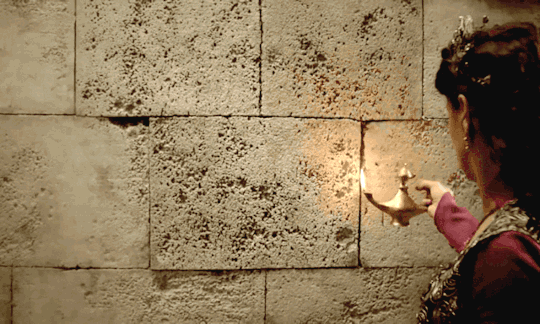



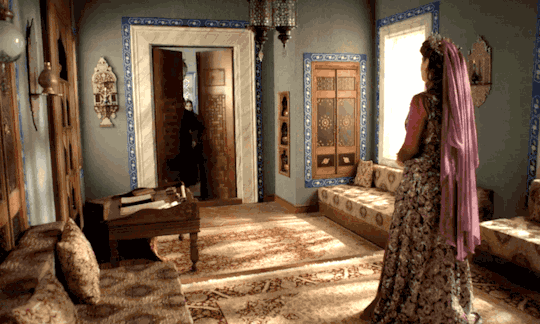

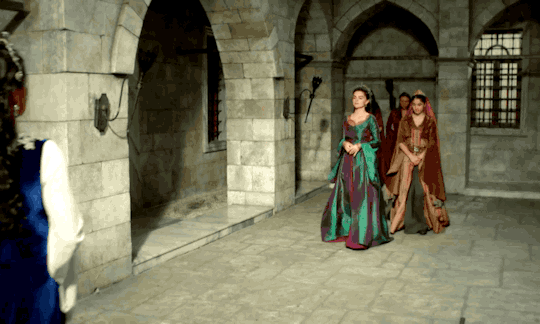



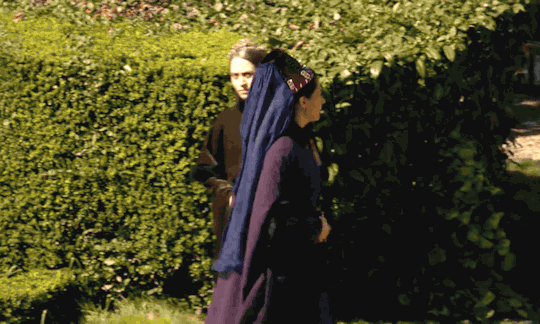
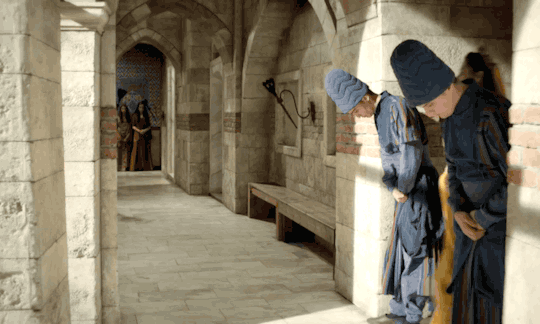
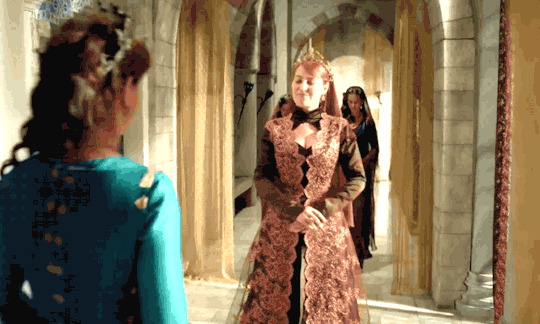
Magnificent Century + Faceless Sultanas: Fatma Sultan
#Muhteşem Yüzyıl#Magnificent Century#mcedit#Muhtesem Yuzyil#weloveperioddrama#perioddramaedit#period drama#historical drama#Fatma Sultan#The Conspiracy#MC + Faceless Sultanas#The Offensive#MCPlus#Brotherhood War#The Dangerous Game#An Accident in Manisa#New Regent of the Sultanate#The Illness of the Sultan#Passions Run High#There is No End to the Losses#Declaration of War
23 notes
·
View notes
Photo
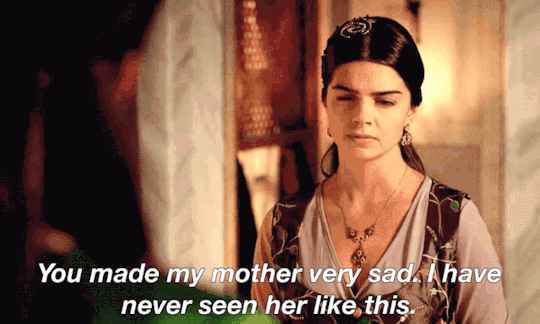


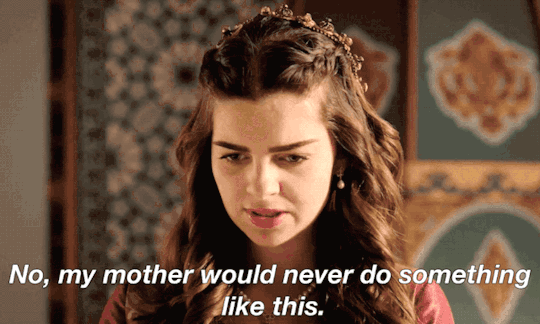


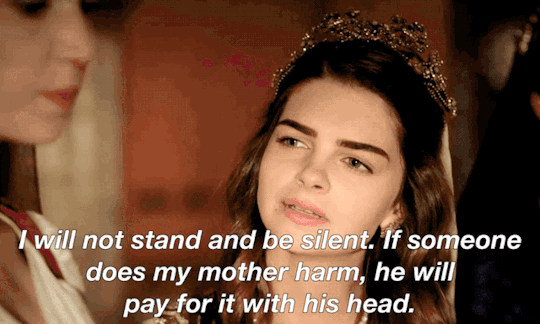

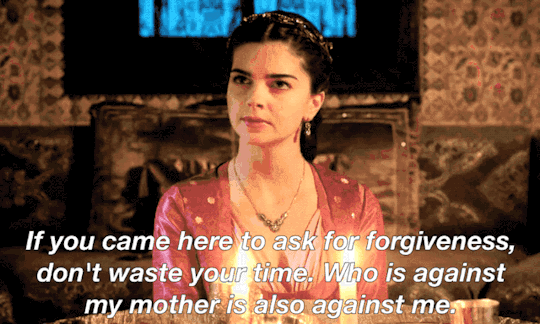

Mihrimah Sultan + Defending Her Mother
#Muhteşem Yüzyıl#Magnificent Century#mcedit#perioddramaedit#weloveperioddrama#period drama#perioddrama#MCPlus#HistoricalDramasPlus#Muhtesem Yuzyil#Mihrimah Sultan#The Favorite Concubine Firuze#Attempt on the Favorite of the Sultan#The Truth About the Daughter of Ibrahim Pasha#A Feast in a Time of Mourning#Blood and Tears#wspaniałe stulecie#The Decision of the Sultan#An Accident in Manisa#Awkward-Sultana#This is always made me laugh because Hurrem did most of the things Mihri defended her from
109 notes
·
View notes
Text
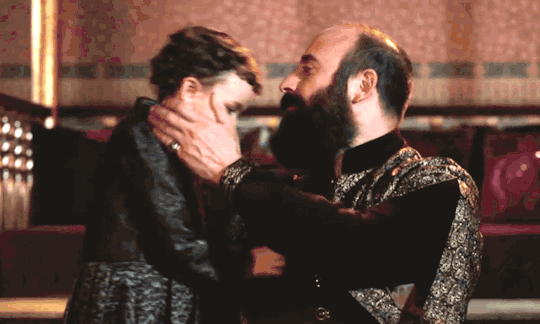


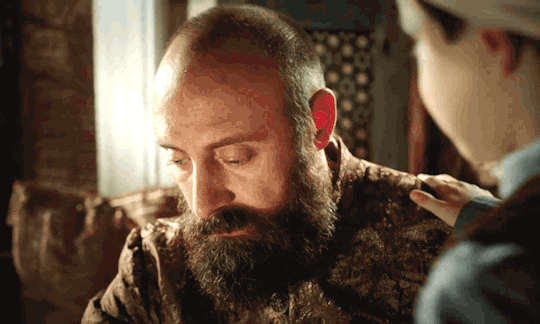
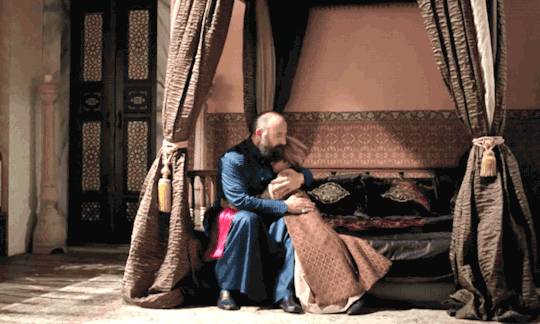



Magnificent Century Season 3 & 4 + Sultan Suleiman & His Young Children
#Muhteşem Yüzyıl#Magnificent Century#mcedit#weloveperioddrama#perioddramaedit#period drama#perioddrama#historical drama#Muhtesem Yuzyil#MCPlus#HistoricalDramasPlus#Gold is Found#Fateful Act#A Tempting Offer#Getting a Divorce#The Decision of the Sultan#Revenge of Hatice Sultan#The Execution of the Head of the Janissaries#An Accident in Manisa#Sultan Suleiman#Awkward-Sultana
22 notes
·
View notes
Photo



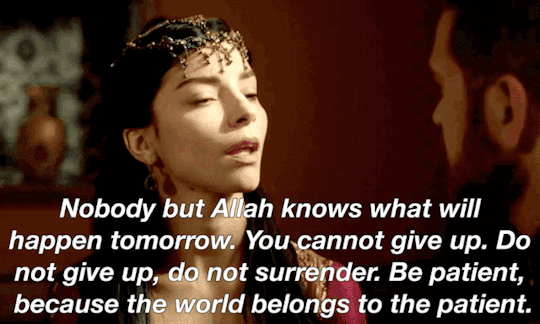





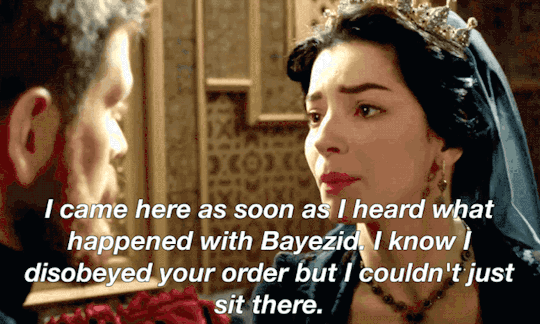
Nurbanu giving pep talks to/supporting Selim (requested by anonymous)
#Muhteşem Yüzyıl#Magnificent Century#mcedit#perioddramaedit#weloveperioddrama#period drama#perioddrama#Nurbanu Sultan#Sehzade Selim#Muhtesem Yuzyil#wspaniałe stulecie#requests#Awkward-Sultana#An Accident in Manisa#Rebellion or Seeking Justice#Price of Three Words#Everything Goes According to Plan#The Day of Reckoning Has Come#Disobedience#The End Is Near#The Last Days of the Great Sultana#Silk cord for Brother
273 notes
·
View notes
Photo
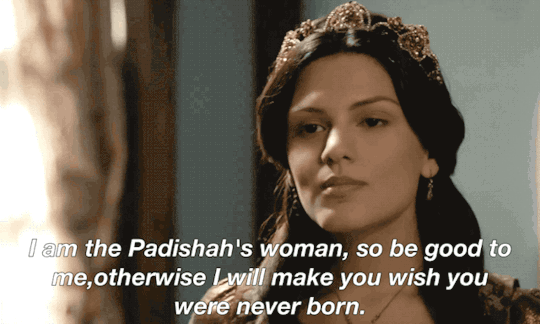





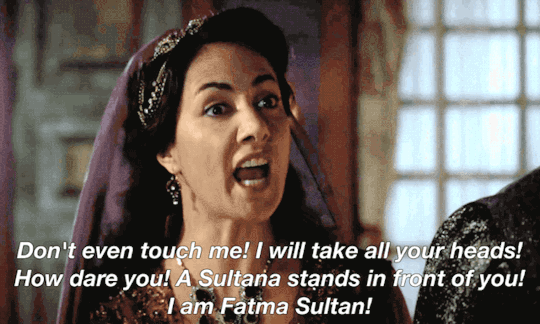
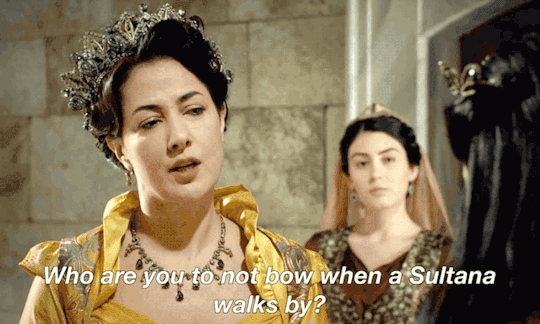
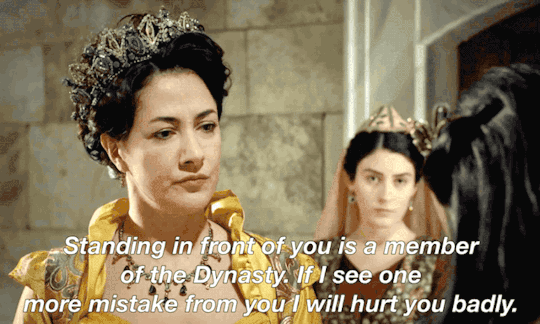

Magnificent Century Season 4 + Sultanas Being Elitist
#Muhteşem Yüzyıl#Magnificent Century#mcedit#Hurrem Sultan#perioddramaedit#weloveperioddrama#period drama#perioddrama#MCPlus#HistoricalDramasPlus#Muhtesem Yuzyil#wspaniałe stulecie#Huricihan Sultan#Fatma Sultan#Nazenin Hatun#Mihrimah Sultan#MC S4 Sultanas + Elitism#An Accident in Manisa#Rebellion or Seeking Justice#Price of Three Words#New Regent of the Sultanate#The Illness of the Sultan#Awkward-Sultana
46 notes
·
View notes
Photo


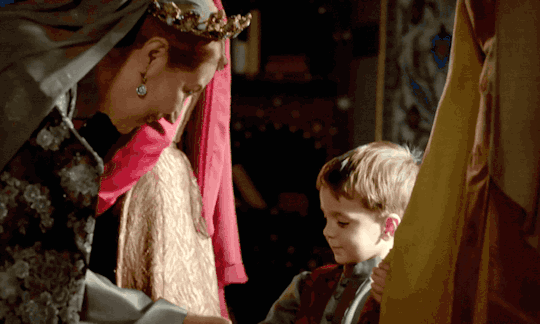




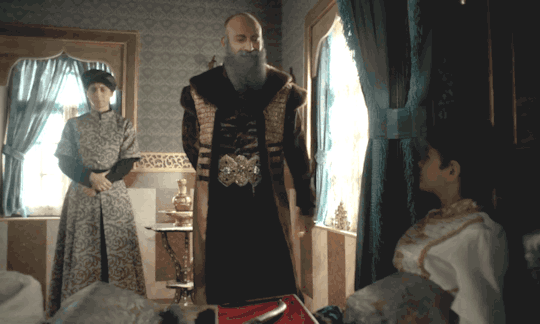
Magnificent Century Season 4 + Grandparents & Grandchildren, Part 1 (Parts 2,3) (requested by anonymous)
#Muhteşem Yüzyıl#Magnificent Century#perioddramaedit#weloveperioddrama#mcedit#Hurrem Sultan#Muhtesem Yuzyil#wspaniałe stulecie#period drama#perioddrama#requests#MCPlus#HistoricalDramasPlus#Mahidevran Sultan#nurbanu sultan#Humasah Sultan#Great Prediction#New Sanjack-bey of Manisa#An Accident in Manisa#Rebellion or Seeking Justice#The Fate of Sehzade Mustafa#Endless Grief#The First Victim of the Struggle#Nergissah Sultan#sultan suleyman#Sehzade Mehmet#Sehzade Murad#Awkward-Sultana
102 notes
·
View notes
Photo
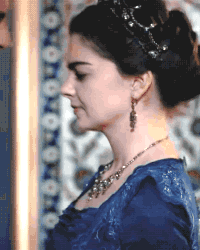



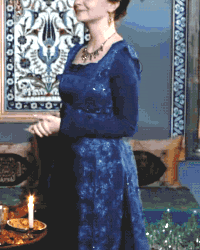

(Almost) Every Costume Per Episode + Mihrimah’s blue gown and kaftan in 4x03,5,11
#Muhteşem Yüzyıl#Muhtesem Yuzyil#Magnificent Century#mihrimah sultan#mcedit#perioddramaedit#weloveperioddrama#costumeedit#wspaniałe stulecie#(Almost) Every Costume Per Episode#sultana#ottoman#4x03#Another Sister of the Sultan#4x05#The Secrets of Fatma Sultan#4x11#An Accident in Manisa#mc#costumes#costume edit#costume drama#costume set#costume series#Almost Every Costume Per Episode#historical drama#period drama#perioddrama#Awkward-Sultana
48 notes
·
View notes
Photo



(Almost) Every Costume Per Episode + Nurbanu’s yellow gown in 4x11
#Muhteşem Yüzyıl#Nurbanu Sultan#Muhtesem Yuzyil#mcedit#Magnificent Century#weloveperioddrama#perioddramaedit#costumeedit#4x11#An Accident in Manisa#mc#wspaniałe stulecie#costumes#costume edit#costume drama#costume set#costume series#Almost Every Costume Per Episode#historical drama#period drama#perioddrama#merve boluğur#Awkward-Sultana
55 notes
·
View notes
Photo
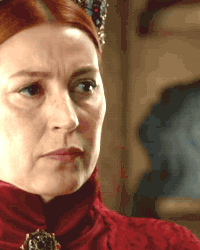
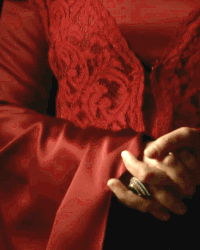

(Almost) Every Costume Per Episode + Hürrem’s red gown and red lace kaftan in 4x07,11,14
#Muhteşem Yüzyıl#Magnificent Century#Hürrem Sultan#Hurrem Sultan#mcedit#perioddramaedit#weloveperioddrama#costumeedit#Muhtesem yuzyil#mc#The Execution of the Head of the Janissaries#An Accident in Manisa#All the Secrets Become Clear#wspaniałe stulecie#costumes#costume edit#costume drama#costume set#costume series#Almost Every Costume Per Episode#historical drama#period drama#perioddrama#Vahide Perçin#Awkward-Sultana
15 notes
·
View notes